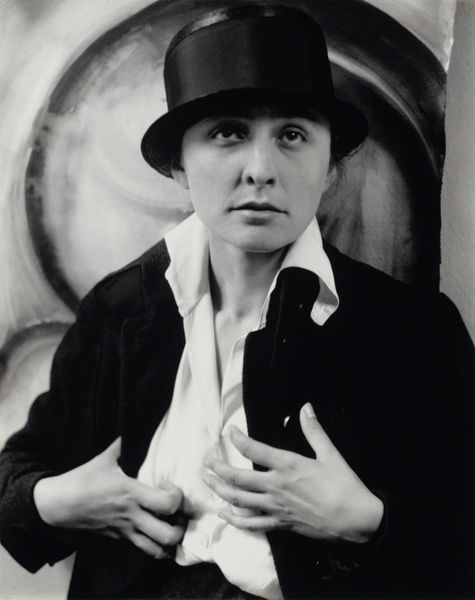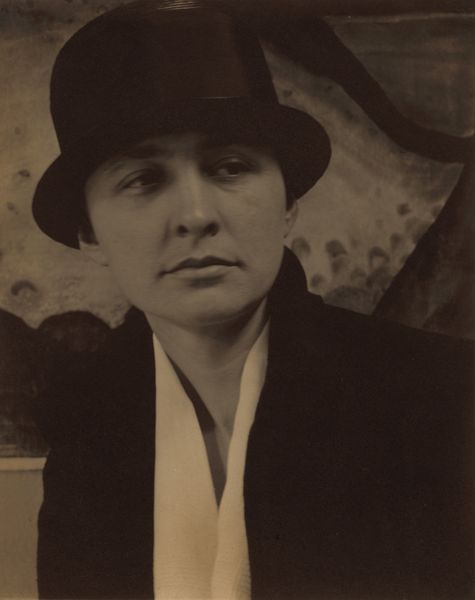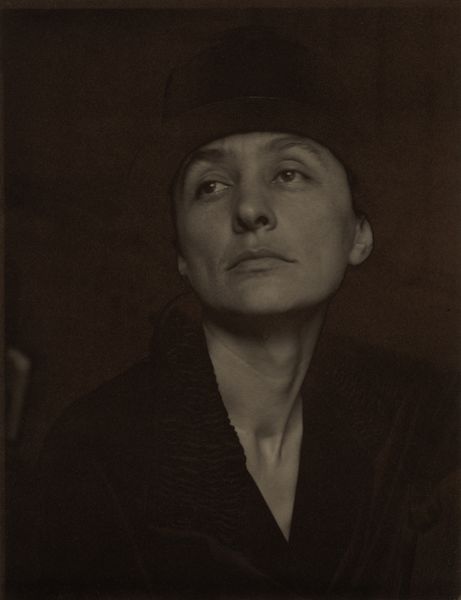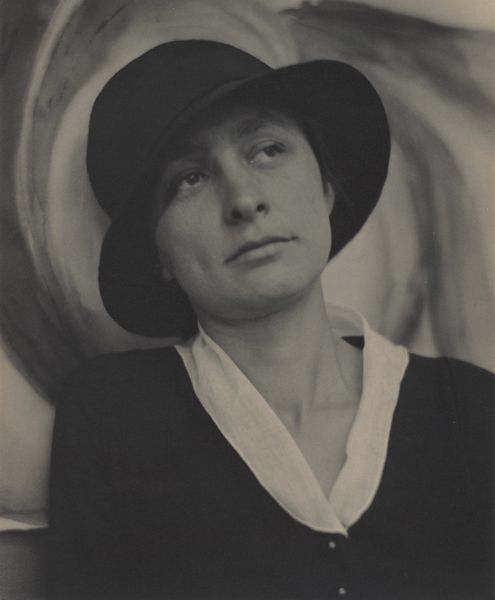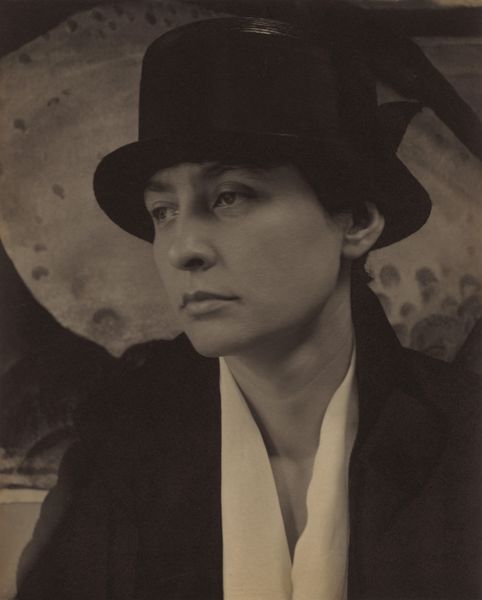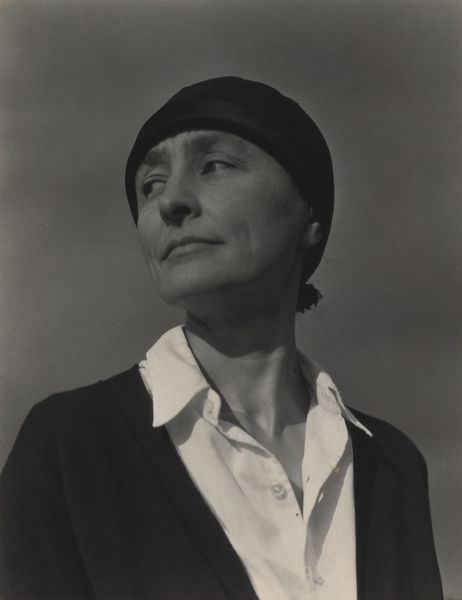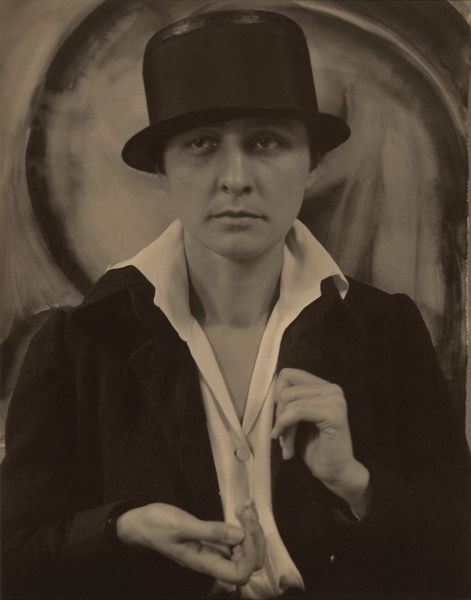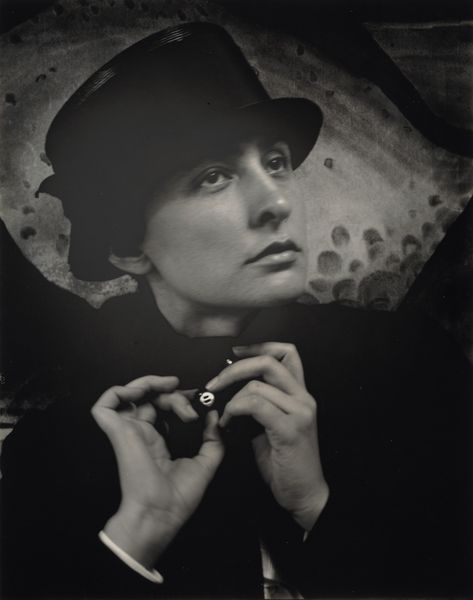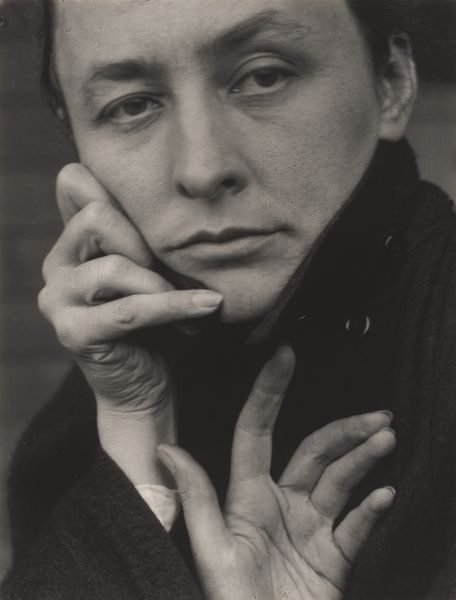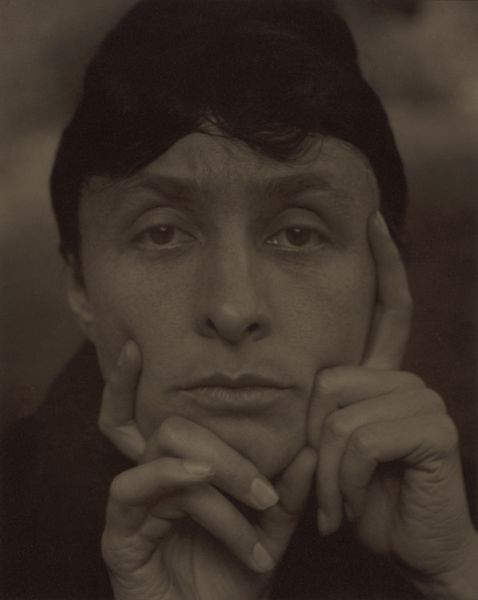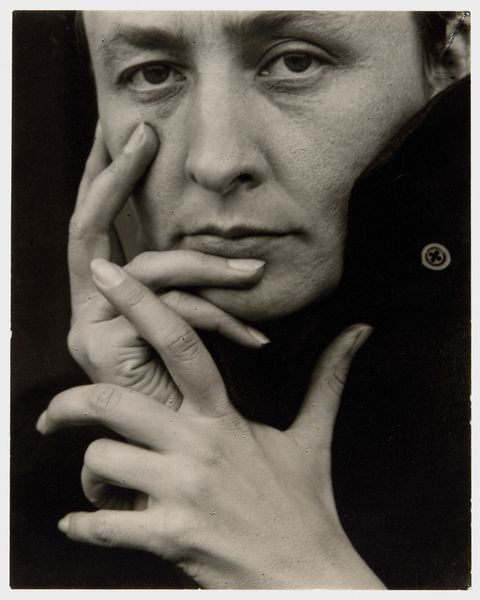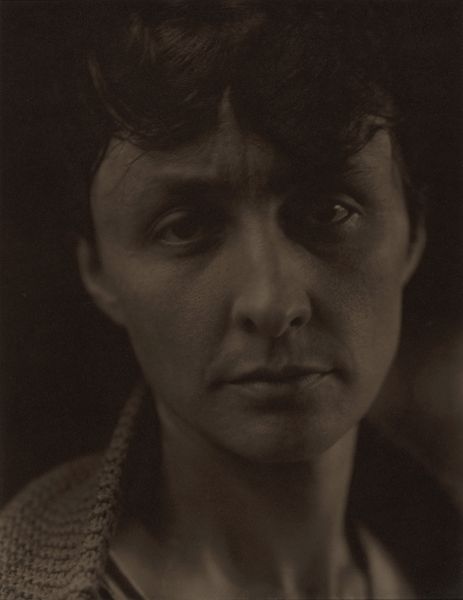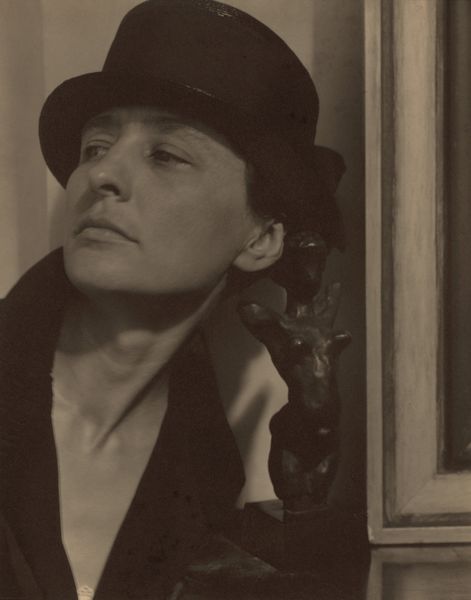
photography, gelatin-silver-print
#
portrait
#
self-portrait
#
pictorialism
#
portrait
#
photography
#
historical photography
#
gelatin-silver-print
#
modernism
Dimensions: image: 23.8 x 18.7 cm (9 3/8 x 7 3/8 in.) sheet: 25.2 x 20 cm (9 15/16 x 7 7/8 in.) mat: 56.6 x 46.3 cm (22 5/16 x 18 1/4 in.)
Copyright: National Gallery of Art: CC0 1.0
Curator: This gelatin-silver print, taken by Alfred Stieglitz in 1923, is titled "Georgia O'Keeffe". The work is one of many portraits he made of the artist. Editor: It has such a somber mood. It’s the kind of image that holds your attention, asking, demanding even, that you really see the subject. Curator: Stieglitz sought to capture the inner essence of O’Keeffe, showcasing her strength and individuality. The hat, for instance, adds a layer of formality but also, perhaps, of shielding. Editor: It’s interesting to consider Stieglitz’s perspective as the maker. He used a gelatin-silver print, a process capable of rendering fine detail, which suggests a desire to truly capture a likeness of O'Keeffe. How much of his perception, his ideas, were influencing his representation of her through material choice and the physical act of making the picture? Curator: The gaze upward draws my attention. There’s an almost devotional quality. Knowing their relationship, is Stieglitz suggesting O'Keeffe’s aspirations? Editor: There is a strong sense of visual hierarchy to the photographs around the sitter. I am wondering how Stieglitz worked in the darkroom. The whole act was, in essence, to make images, not just to take them. Curator: These portraits contributed heavily to the construction of O’Keeffe's persona as an independent, modern woman. The camera's gaze helped establish her in the cultural imagination. Editor: Precisely. Photography in this era straddled the line between art and industry, each print a unique act of labor. Thinking about the silver and gelatin and Stieglitz’s involvement is a means of exploring the historical narratives and value attributed to the materials that create art. Curator: It is striking how many layers reside within one still photograph. Editor: Seeing the work in person really illuminates Stieglitz's methodology in representing his partner.
Comments
No comments
Be the first to comment and join the conversation on the ultimate creative platform.
